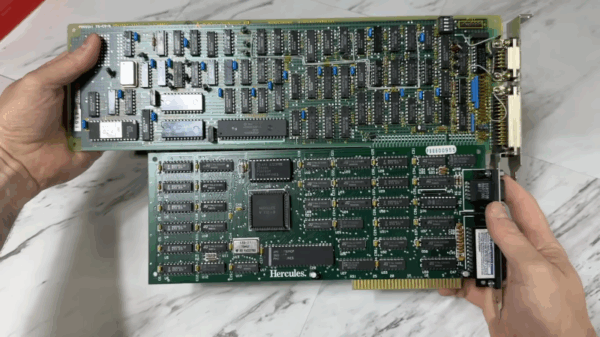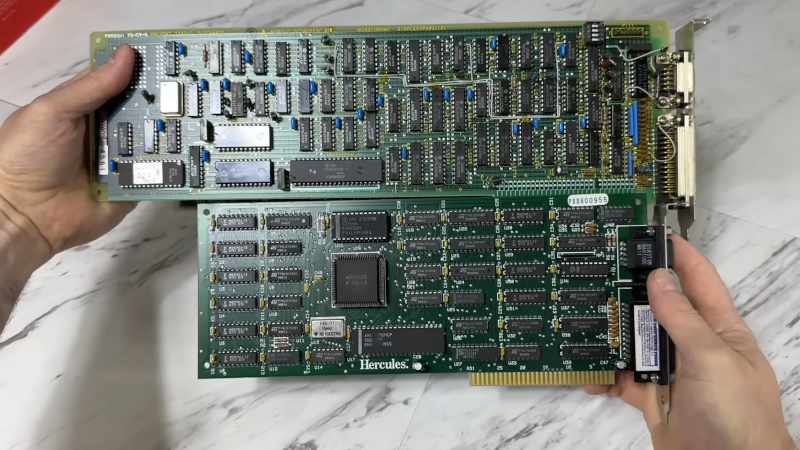The evolution of computer graphics technology has transformed the way we interact with devices today. In the 1980s, graphics cards played a pivotal role in shaping the early computing experience. The introduction of the IBM PC marked a significant moment, offering users a choice between the Color Graphics Adapter (CGA), which provided color graphics, and the Monochrome Display Adapter (MDA), focused on text. While the choice may seem clear-cut now, the MDA offered a higher resolution, making text easier to read.
As the market developed, companies identified gaps in graphic capabilities, leading to innovations like the Hercules Graphics Card. This card supported high-resolution monochrome text and also featured a graphics mode, filling a niche that appealed to many users. The 1986 version of the Hercules card incorporated an Application-Specific Integrated Circuit (ASIC), enhancing its performance compared to earlier models.
Understanding the Graphics Landscape
The original MDA card had the capability to display eight colors, although it was not widely utilized due to the lack of compatible monitors. At the time, CGA offered a resolution of 640×200, while the MDA achieved 720×350, providing a notable advantage for text clarity. The Hercules card maintained the MDA’s resolution in text mode and introduced a graphics mode of 720×348, allowing more versatility.
During this era, monitors were costly and required specific inputs, making compatibility a critical factor for users. The choice to retain a monochrome monitor while utilizing a Hercules card often appealed to those looking to maximize their investment in hardware. The architecture of these early graphics cards was substantial, featuring numerous chips, which contributed to their size and complexity.
Developers who created software for these systems often encountered challenges due to different memory addresses. For example, the CGA buffer was located at address B800:0000, whereas monochrome cards operated at B000:0000. This distinction sometimes allowed affluent users to run two monitors simultaneously—a color monitor alongside a monochrome one, enhancing their computing experience.
The Legacy of Monochrome Graphics
In a recent exploration, The 8-bit Guy delved into the capabilities of these graphics cards, particularly how they performed with software and games. While some games adapted well to the Hercules graphics mode, others struggled, often resulting in poor-quality visuals that simply scaled up CGA graphics. This discrepancy highlighted the challenges developers faced in optimizing graphics for varying capabilities.
As technology progressed, graphics standards evolved from CGA to Enhanced Graphics Adapter (EGA), and eventually to Video Graphics Array (VGA). Each iteration brought improvements in color depth and resolution, ultimately shaping the modern digital landscape. The journey from monochrome displays to today’s advanced graphics systems illustrates the rapid technological advancements that have transformed computing.
The story of early graphics cards serves as a reminder of the ingenuity that characterized the tech industry in its formative years. Understanding this history not only pays homage to the pioneers of computing but also highlights the continuous innovation that defines the sector today.





































































